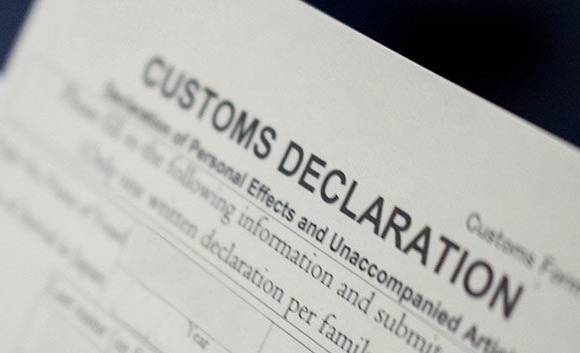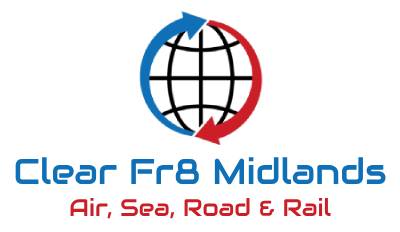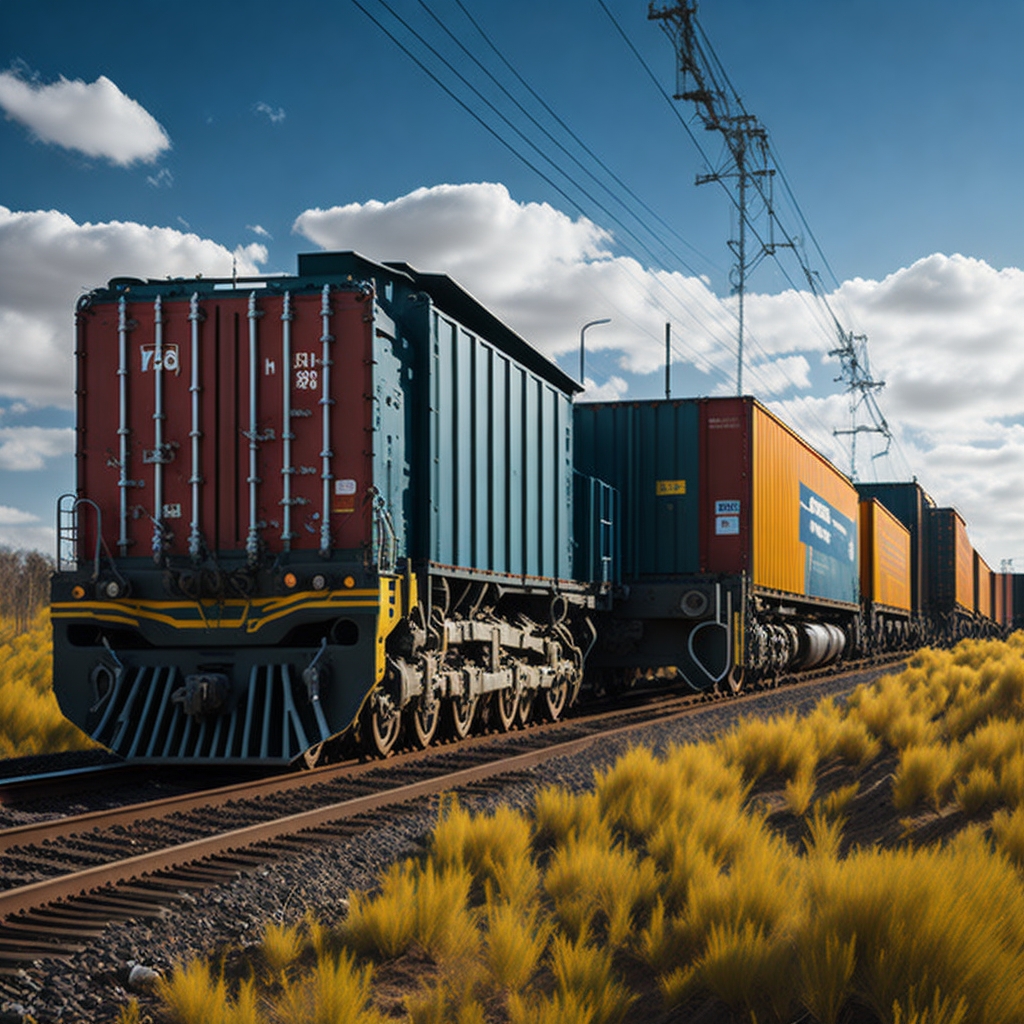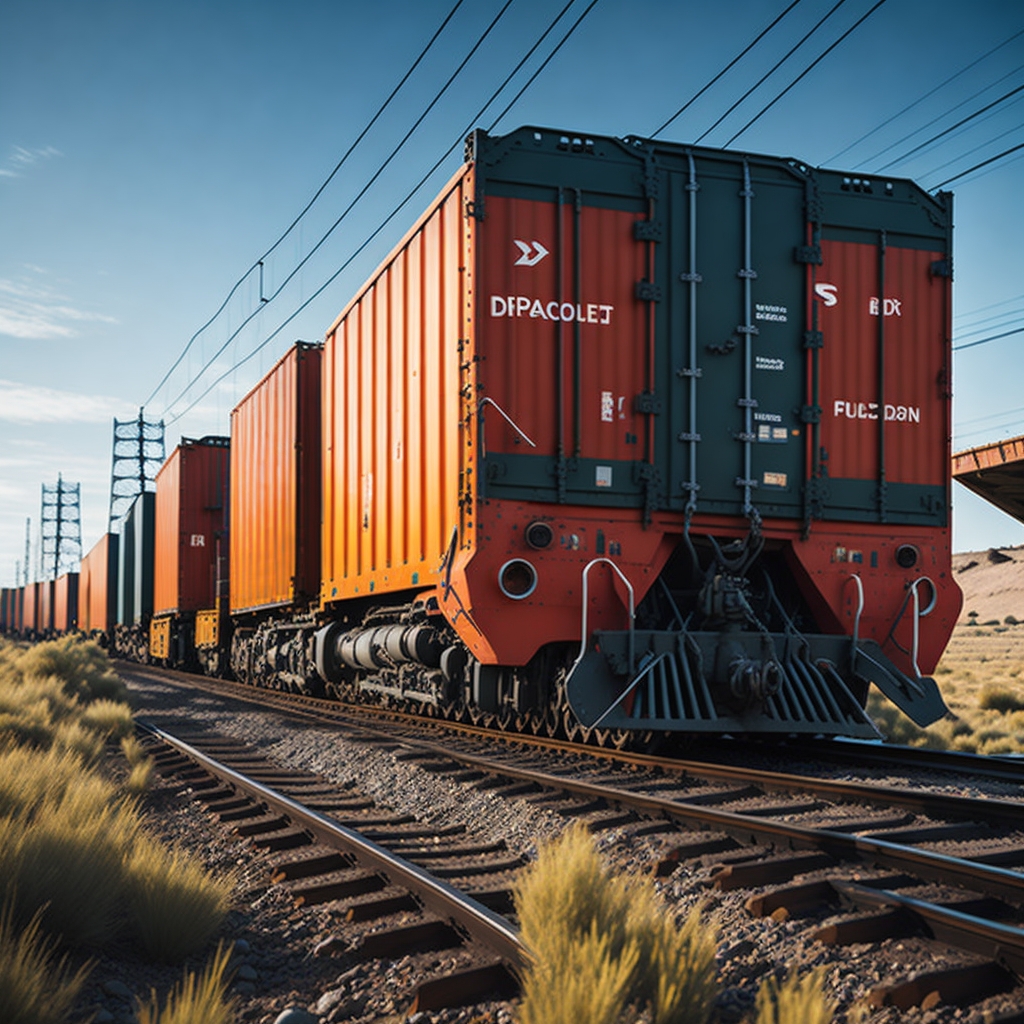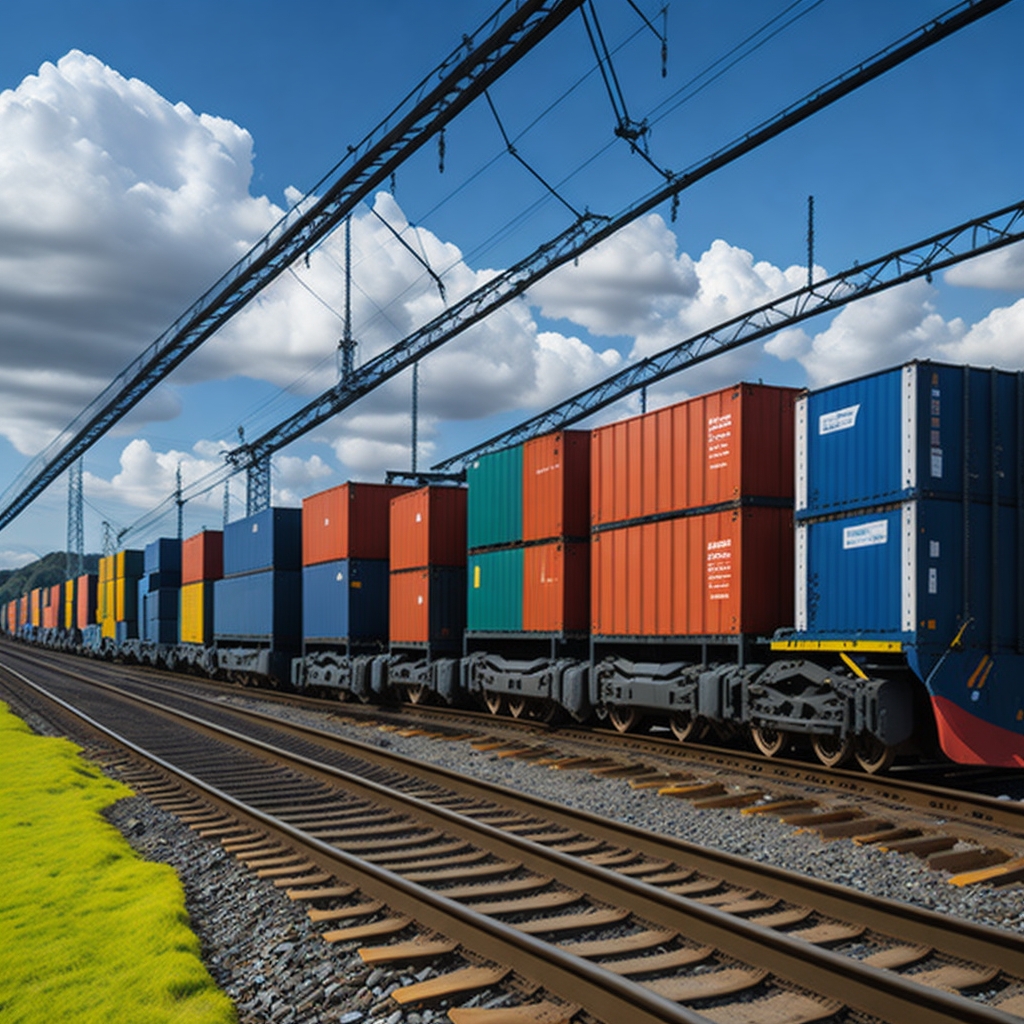Rail Freight Customs Clearance
Rail freight services are the transportation of goods by rail, using trains that carry various types of cargo, such as containers, bulk materials, vehicles, or parcels. Rail freight services offer several advantages over other modes of transport, such as road, air, or sea, such as lower environmental impact, higher safety, greater reliability, and lower cost. However, rail freight services also face some challenges, such as capacity constraints, infrastructure limitations, regulatory barriers, and competition from other modes. In this essay, I will discuss the main features and benefits of rail freight services, using examples from the UK and the US. I will also address some of the current issues and opportunities for rail freight services in these countries.
Rail freight services can be classified into two major types: intermodal and bulk. Intermodal rail freight services involve the movement of goods in standardized units, such as containers or trailers, that can be easily transferred between different modes of transport, such as rail, road, or sea. Intermodal rail freight services are suitable for transporting high-value or time-sensitive goods over long distances, such as consumer goods, electronics, or perishables. Bulk rail freight services involve the movement of large quantities of homogeneous goods that are not packaged or unitized, such as coal, iron ore, grain, or cement. Bulk rail freight services are suitable for transporting low-value or heavy goods over short or medium distances, such as raw materials, construction materials, or agricultural products.
The main features and benefits of rail freight services are:
- Lower environmental impact: Rail freight services have a lower carbon footprint than road or air transport, as they emit less greenhouse gases per tonne-kilometre of cargo. According to a report by the Rail Delivery Group1, rail freight contributes £2.45 billion to the UK economy each year and reduces carbon emissions by 7.2 million tonnes annually. Similarly, according to a report by the Association of American Railroads2, rail freight accounts for 40% of US intercity freight volume but only 2.1% of transportation-related greenhouse gas emissions. Rail freight services also reduce noise pollution and road congestion by removing lorries from the highways.
- Higher safety: Rail freight services have a higher safety record than road transport, as they have fewer accidents and fatalities per tonne-kilometre of cargo. According to the Office of Rail and Road3, there were 0.03 fatalities per billion tonne-kilometres of rail freight in Great Britain in 2019-20, compared to 0.17 fatalities per billion tonne-kilometres of road freight in 2018. Similarly, according to the Federal Railroad Administration4, there were 0.01 fatalities per billion tonne-miles of rail freight in the US in 2019, compared to 0.15 fatalities per billion tonne-miles of road freight in 2018.
- Greater reliability: Rail freight services have a greater reliability than road or air transport, as they are less affected by weather conditions, traffic jams, or driver shortages. According to Network Rail, rail freight operates around the clock and has an average punctuality rate of 94% in Great Britain. Similarly, according to the Association of American Railroads, rail freight has an average on-time performance rate of 95% in the US.
- Lower cost: Rail freight services have a lower cost than road or air transport, as they have lower fuel consumption and maintenance expenses per tonne-kilometre of cargo. According to a study by Transport & Environment, rail freight is 3-4 times more fuel-efficient than road freight and 8-9 times more fuel-efficient than air freight in Europe. Similarly, according to a study by Cambridge Systematics, rail freight is 4 times more fuel-efficient than road freight and 9 times more fuel-efficient than air freight in the US.
Some of the current issues and opportunities for rail freight services are:
-
Capacity constraints: Rail freight services face capacity constraints due to the limited availability of track slots, terminals, and rolling stock. These constraints may limit the growth and diversification of rail freight services, especially in high-demand corridors or regions. To address this issue, rail freight services need to invest in infrastructure, technology, and innovation to improve their efficiency, productivity, and flexibility. For example, in the UK, the government has committed £1 billion to upgrade the Transpennine route between Manchester and York to increase capacity and speed for both passenger and freight trains. In the US, the Federal Railroad Administration has awarded $320 million to fund projects that enhance rail network capacity and performance across 15 states.
-
Infrastructure limitations: Rail freight services face infrastructure limitations due to the ageing or incompatible rail network, equipment, and standards. These limitations may affect the quality, safety, and competitiveness of rail freight services, especially in cross-border or intercontinental operations. To address this issue, rail freight services need to collaborate with other stakeholders, such as governments, regulators, or customers, to harmonize and modernize the rail infrastructure, equipment, and standards. For example, in the UK, the Rail Freight Group has launched a campaign to electrify more rail freight routes to reduce emissions and improve performance. In the US, the Association of American Railroads has advocated for a federal mandate to implement positive train control (PTC), a technology that prevents collisions and derailments, on all rail lines that carry passengers or hazardous materials.
-
Regulatory barriers: Rail freight services face regulatory barriers due to the complex and inconsistent rules and regulations that govern the rail sector, such as access charges, safety standards, or customs procedures. These barriers may increase the administrative and operational costs and risks of rail freight services, especially in cross-border or intercontinental operations. To address this issue, rail freight services need to engage with other stakeholders, such as governments, regulators, or customers, to simplify and harmonize the rules and regulations that affect the rail sector. For example, in the UK, the government has introduced new procedures and requirements for rail freight customs clearance with the EU after Brexit. In the US, the government has established the US-Mexico-Canada Agreement (USMCA), a trade deal that facilitates the movement of goods by rail across North America.
-
Competition from other modes: Rail freight services face competition from other modes of transport, such as road, air, or sea, that may offer lower prices, faster delivery, or greater flexibility for some types of goods or markets. To address this issue, rail freight services need to differentiate themselves from other modes by highlighting their unique value proposition, such as lower environmental impact, higher safety, greater reliability, or lower cost. They also need to diversify their product portfolio and customer base by offering new or customized services that meet the changing needs and preferences of the market. For example, in the UK, GB Railfreight has launched a new service that transports aggregates from London to Edinburgh for construction projects. In the US, BNSF Railway has launched a new service that transports fresh produce from California to Texas in refrigerated containers.
In conclusion, rail freight services are an important mode of transport that offer several benefits over other modes, such as lower environmental impact, higher safety, greater reliability, and lower cost. However, rail freight services also face some challenges, such as capacity constraints, infrastructure limitations, regulatory barriers, and competition from other modes. To overcome these challenges and seize the opportunities in the market, rail freight services need to invest in infrastructure, technology, and innovation; collaborate with other stakeholders; and differentiate themselves from other modes.
- Rail Customs clearance
- Rail Freight Forwarding
- Rail Freight
- Railway Cargo trains
DOCUMENT REQUIREMENTS
- Certificate of Origin
- Bill of Lading
- Packing List
- Commercial Invoice
- Customs Clearance
